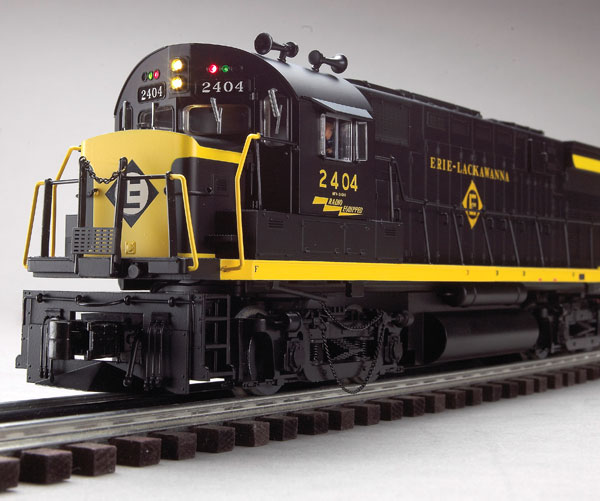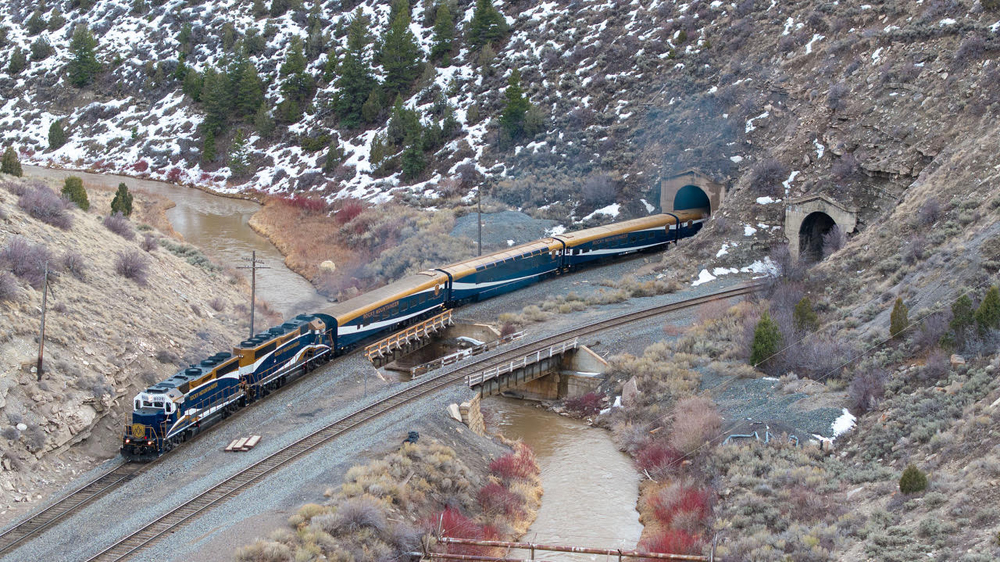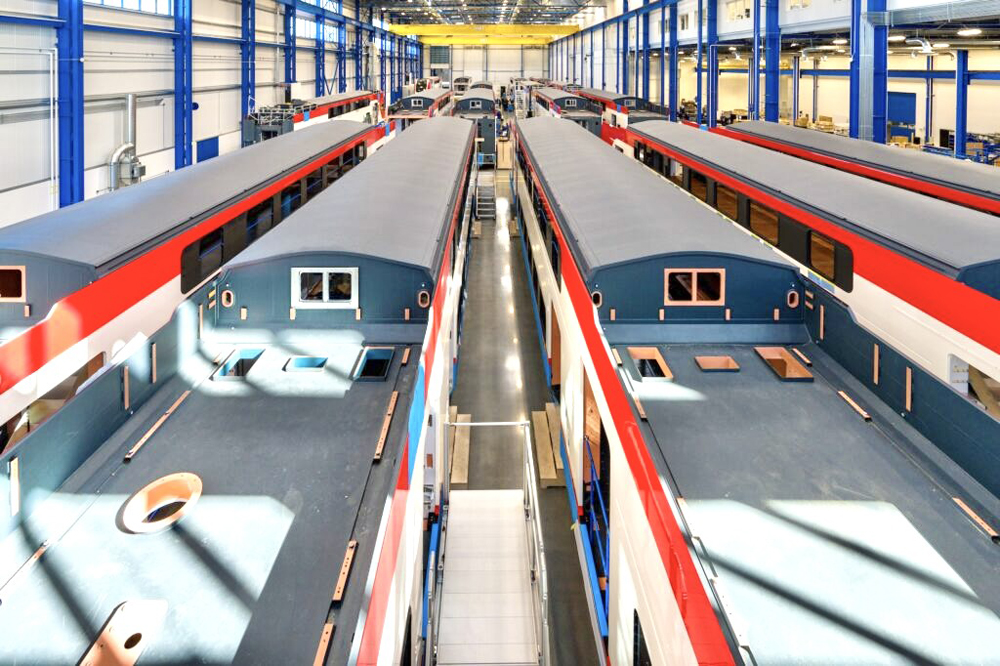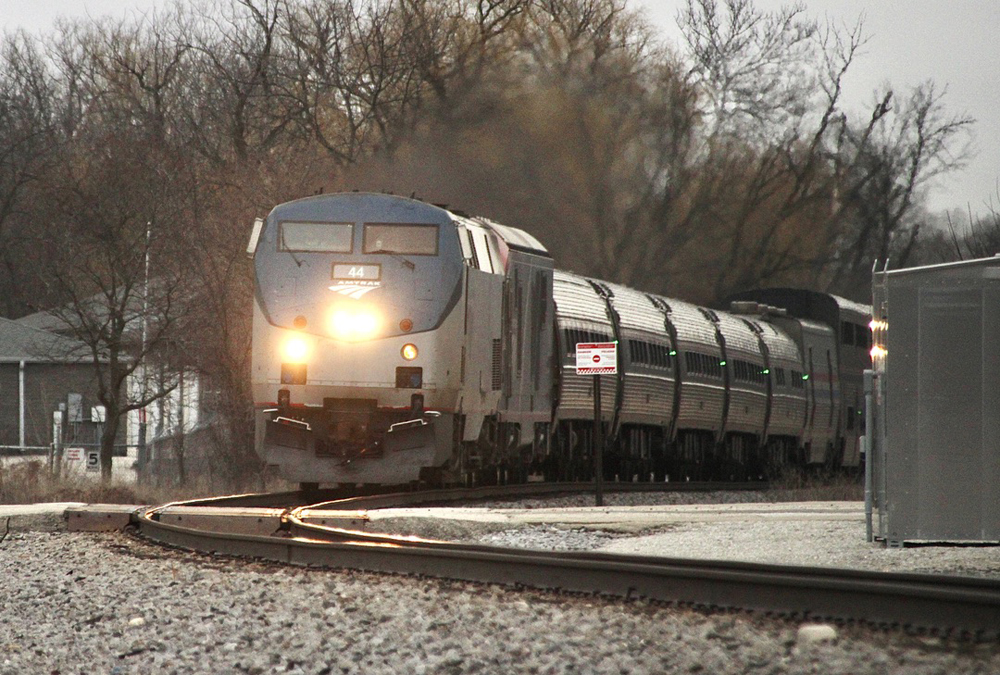I’ve often wondered why some segments of our clan of railroad hobbyists (myself included) are so, well, hard-core about Alco diesels.
Oh, I know that Alco’s PA was larger than life, and the firm’s switchers could be found from coast to coast. But Alco wasn’t even in second place in the race for market share.
Let’s face it, the only people Alco beat in the order books were Fairbanks-Morse, Baldwin, Lima, Lima-Hamilton, and Baldwin-Lima-Hamilton. And that isn’t saying much.
But we’re talking O gauge, three-rail, not 1:1 scale running, so where the real locomotives ultimately failed, they certainly succeed in 1:48 scale.
When I took the Atlas O Century 424 out of the box, it dawned on me why Alcos have such a following. Using the name popularized by a story series years ago in Trains magazine, Alco is a “fallen flag.” Just like the Minneapolis & St. Louis, Lehigh & New England, or the New York, Ontario & Western, Alco is gone, it ain’t comin’ back, and as everyone knows, “It coulda been a contender, if just ….” This point of view is a natural fit with toy trains.
Closer to reality, Atlas O has done another smash-up job in re-creating an Alco – this baby coming a bit later in the Alco cavalcade of diesels. Launched in the early 1960s with a fair bit of hype about greater reliability and efficiency in its locomotives, the Century series featured a collection of diesels with imposing, boxy superstructures and growling prime movers. But to many railroads they were at the end of a line of locomotives that just couldn’t meet expectations as well as Electro-Motive’s Geeps or General Electric’s U-boats did.
Alco offered the Century 424 from 1963 through the end of the firm’s diesel-building days in 1967. Approximately 190 of the 2,400-horsepower road switchers were sold to North American railroads. Interestingly, about 50 each were sold to American and Mexican railroads, with nearly half (92) of the production going to Canada.
The similar Alco C-425 (also offered by Atlas O) differed mainly in its larger horsepower rating (2,500 horsepower versus 2,400).
The model
Atlas O has faithfully rendered this stubby-nosed wonder. The C-424 nose has all the detail and functionality we’ve come to expect from Atlas O.
The front of the pilot features a coil coupler bracketed by multiple-unit and brake lines. There are no front steps for the brakeman; rather, the pilot has a snowplow that gently arcs forward. On top of the truck, you’ll also see a simulated uncoupler arm.
On the sides of the truck you’ll see safety texture on the steps, as well as up on the deck. A drawbridge can be found on both ends of the locomotive, each secured with a safety chain.
Add-on handrails with yellow-painted accents are on both end decks; on the locomotive’s stubby nose, two grab irons snake around the gently curving corners. Stepping up to the cab, you notice that it almost jumps out at you. Unlike most diesels with cab windshields that are either upright (in the case of locomotives such as the GP40) or lean backwards (like the F3), the 424’s windshields jut forward to form a pointed leading edge that is more pronounced than that of a snowplow!
The window array on the cab has six add-on wiper arms. The side windows appear to be applied from the outside, and they have overhanging sunshades. The Erie-Lackawanna version has forward- and rear-facing horns on the fireman’s side. Above the windows are illuminated number boards and marker lights. There are two cast-in cab doors, one on the engineer’s side (rear) and the other on the fireman’s side (forward).
The body has a very nice level of detail with solid – but well-executed – screens. There are plenty of cast-in hinge, latch, vent, louver, door, and other reference points. There are a few hatches that look so good I poked them with a fingernail to see if they sprung open, but to no avail.
Functioning marker lights and number boards can be found on both ends of the Alco.
The roof features cast-in hatches, hinges, and seams. There are also two removable sections at the rear of the long hood. One is at the exhaust, which covers the smoke unit. Remove this section to pour fluid into the fan-assisted smoke unit.
The second access hatch is actually the overhanging radiator on the rear. You remove these “wings” to install the 9-volt RailSounds backup battery (as always, included by Atlas O with the locomotive).
The die-cast metal trucks look terrific, and the lead set has a brake-line chain (almost dragging on the ground!) attached to the brake cylinders and the arm from the manual brake pump on the fireman’s side. Very cool.
When you flip the model over, you’ll see two pickup rollers roughly 6 inches apart. Beneath the cab you’ll find on/off switches for sound, smoke, and speed control, as well as rotary control for the volume. The Lionel TrainMaster run/program switch is a bit hidden behind an emergency brake line on the fireman’s side, but with a good pair of glasses you’ll be able to find it.
The die-cast metal fuel tank houses the speaker and helps add some resonance to the sound system.
The C-424 has been cataloged undecorated and in Burlington Northern, Canadian Pacific, Delaware & Hudson, Erie-Lackawanna, Norfolk & Western, and Reading road names.
As for the painting and decoration, well, what can you say about a black locomotive? The yellow accents are clear and crisp, and the numbers, emblems, and the ever-popular “Radio equipped” logos look sharp. There are Alco builder’s plates on the side of the frame near the rear trucks.
On the test track
The two can-style motors took a nominal amount of break-in time, and they ran best with the Train America Studios Engineer-On-Board system on. Motor performance was quiet and smooth.
Our best low-end speed average was 2.5 scale mph in command-control mode and 8.7 scale mph in conventional-control mode with speed control turned on. Our high-end top speed was 70.4 scale mph.
Assisted by four traction tires, the drawbar pull for the diesel locomotive is 2 pounds 3 ounces.
The sound system is Lionel’s generic Alco package, and sound reproduction is good. Any locomotive with a sound bundle that makes you think the prime mover is going to shake itself apart adds a bit more character than, say, the steady drone of a General Motors 645 engine.
The model also features a smoke unit and coil-operated couplers. The sound system delivers a very nice “ker-thunk!” when you hit the “uncouple” button on a Lionel controller.
In a nutshell, this Atlas O locomotive packs more texture and detail into a small space than you’d expect – and delivers top-notch operating characteristics on top of that. Check it out.














